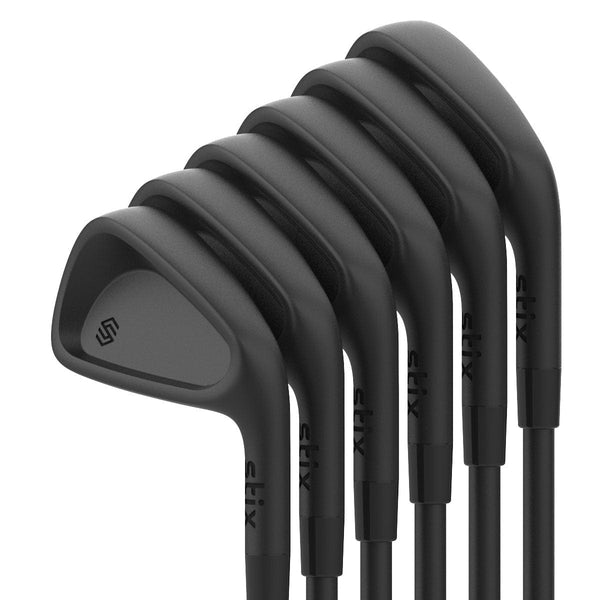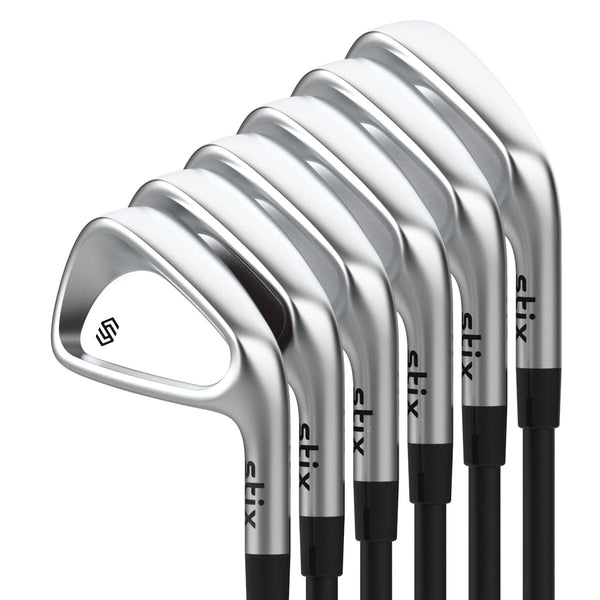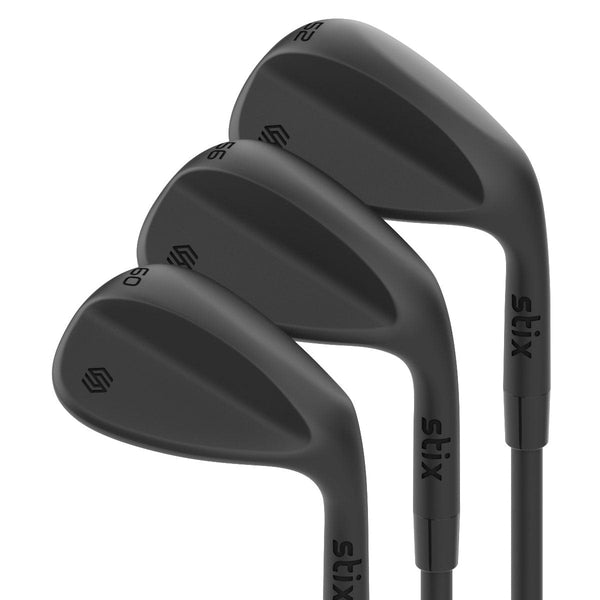As a beginner or intermediate golfer, the world of golf shots can seem both exciting and overwhelming. This comprehensive guide aims to help you navigate various golf shots and improve your game, from mastering the fundamentals to perfecting specialty shots.
The Fundamentals
To achieve a solid foundation in golf, you first need to master grip, stance, and alignment. These fundamentals significantly impact your game, and it's crucial to get them right before exploring the various golf shots.
Proper grip, stance, and alignment
- Grip: Hold the club lightly, ensuring your hands work together as a single unit.
- Stance: Position your feet shoulder-width apart, with a slight bend in your knees.
- Alignment: Align your body with the target, using your feet, hips, and shoulders as reference points.
Learn more: How to Improve Your Alignment and Aiming
Swing mechanics
Swing mechanics are also vital for executing various shots accurately. A consistent swing is necessary, and you should focus on tempo and balance to maintain a steady rhythm throughout your swing. Here are a few of the basics to help you improve your swing mechanics:
- Keep your head steady and maintain a stable spine angle.
- Shift your weight smoothly from the backswing to the follow-through.
- Stay relaxed and let the club do the work.
Learn more: Golf Lessons: Are They Worth it for Beginners?
Top Golf Shots
Driver Shots
The drive sets the tone for each hole, requiring a balance of power and accuracy. Focus on the fundamentals and avoid over-swinging. To execute a perfect drive, you need to follow these tips:
- Choose the right club for your skill level (usually a driver).
- Keep a wide stance for stability.
- Make a full, smooth backswing and accelerate through impact.
The Draw and Fade
The draw and fade are shots that curve intentionally, either left-to-right (fade) or right-to-left (draw); make note that it switches if you’re right-handed or left-handed. These shots provide better control and help avoid hazards.
Moving ball flight is a combination of swing path and face angle. If want the ball to move right to left, your swing path needs to be left to right, putting a left spin on the ball. Many refer to the draw swing path as in-to-out, where you keep your hands tight to your hip on your downswing, then extend out through the ball. For a fade, swing out-to-in, where you extend your hands early and hit the outside of the ball, pulling your hands in toward your front hip while you swing. Use these shots strategically when navigating doglegs or avoiding obstacles.
Learn more: What is the Average Distance for Each Golf Club
Iron Shots
The Approach Shot
The approach shot aims to land the ball on the green, setting up a birdie or par opportunity. Accuracy is crucial for this shot.
- Select the right club based on distance, wind, and elevation changes.
- Focus on a smooth swing and solid contact.
- Visualize the ball's trajectory and landing spot before swinging.
The Loft and Pitch
Loft and pitch shots are designed to cover short distances with a high trajectory, allowing the ball to land softly on the green.
- Loft shots have a higher trajectory, ideal for clearing obstacles or stopping quickly on the green.
- Pitch shots fly lower and roll out more, suitable for hitting into an uphill green or when there's more green to work with.
Use a higher-lofted club and open your stance for loft shots, while opting for a lower-lofted club and a square stance for pitch shots.
Learn more: How to Hit a High and Low Golf Shot
The Punch and Stinger
Punch and stinger shots are low-trajectory iron shots, perfect for playing in windy conditions or under tree branches.
- Punch shots are short, controlled shots that stay low and roll out upon landing.
- Stinger shots are longer, penetrating shots that maintain a low trajectory and minimize the effects of the wind. The stinger is a custom shot that Tiger Woods introduced at the Tour in the late ’90s, and no one hits it like him. But we can all try.
To execute a punch or stinger, move the ball back in your stance, choke down on the club, and make a shorter, controlled swing.
Learn more: Hard vs. Soft Golf Balls: Which Should You Use?
Specialty Shots
The Flop Shot
The flop shot is a high, soft-landing shot used to clear obstacles or stop quickly on the green.
To hit a flop shot, use a high-lofted wedge, like a 60-degree lob wedge. Open your stance and clubface to increase the loft. Make a full, aggressive swing, allowing the club to slide under the ball.
The Bump and Run
The bump and run is a low-trajectory shot that rolls out after landing, useful for navigating firm or fast greens.
- Choose a less-lofted club, like a 7-iron or 8-iron.
- Play the ball back in your stance, with your hands slightly ahead of the ball.
- Make a simple, putting-like stroke, ensuring crisp contact.
Sand Shots
Successfully navigating sand shots requires specialized techniques for greenside and fairway bunkers.
- Greenside bunker shots: Use a sand wedge, open the clubface, and aim to splash the sand under the ball.
- Fairway bunker shots: Choose a club with enough loft to clear the lip, choke down on the grip, and focus on solid contact.
Practice maintaining a stable base and smooth swing in the bunker.
Learn more: Ultimate Guide to Golf Wedge Degrees
The Short Game
Chipping
Chipping is essential for saving strokes around the green you can use a variety of clubs, from wedges to short irons, depending on the desired trajectory and roll. To chip like a pro, follow these tips:
- Position the ball back in your stance, with your hands ahead of the ball.
- Keep your wrists firm and make a simple, pendulum-like swing.
Learn more: Chip Shot vs. Pitch Shot: What's the Difference?
Putting
Don’t let your game fall apart once you get to the green. Putting is crucial for scoring well in golf. Here are a few tips to help you putt like a pro:
- Establish a comfortable grip and stance, focusing on stability.
- Develop a consistent stroke, maintaining a square clubface throughout.
- Learn to read greens and adjust your aim and speed accordingly.
Learn more: 10 Tips to Improve Your Putting Skills | 14 Ways to Level Up Your Short Game
The Bad and The Ugly: Slices, Hooks, and Common Mistakes
Slices and Hooks
Slices and hooks are unintentional curves in the ball flight, caused by swing flaws or incorrect clubface angles.
- Slices curve from left-to-right (for right-handed golfers) and are often caused by an outside-to-inside swing path.
- Hooks curve from right-to-left (for right-handed golfers) and typically result from an inside-to-outside swing path.
How to diagnose and fix slices and hooks
- Identify the cause of your slice or hook through video analysis or instruction from a golf professional.
- Address the swing flaws causing your slice or hook with targeted drills and practice.
- Be patient and persistent in your efforts to correct these issues.
Learn more: What is a Golf Slice? 5 Ways to Improve Ball Flight
Topping the ball, shanking, and hitting fat shots
These common mistakes can disrupt your game, but they can be identified and corrected.
- Topping the ball: Often caused by lifting the head or losing posture during the swing. Focus on maintaining a steady head and spine angle.
- Shank: Typically results from an overly aggressive swing or incorrect weight shift. Practice staying balanced and making smooth, controlled swings.
- Fat: Occurs when the club strikes the ground before the ball, usually due to poor weight transfer or an early release. Work on proper weight shift and maintaining lag in the downswing.
Take your shot
Understanding and mastering various golf shots is essential for improving your game. This comprehensive guide provides the foundation for developing your skills on the course. Remember that practice and persistence are key to achieving your golfing goals. Keep refining your techniques and enjoy the journey to becoming a better golfer.
You might also like:






